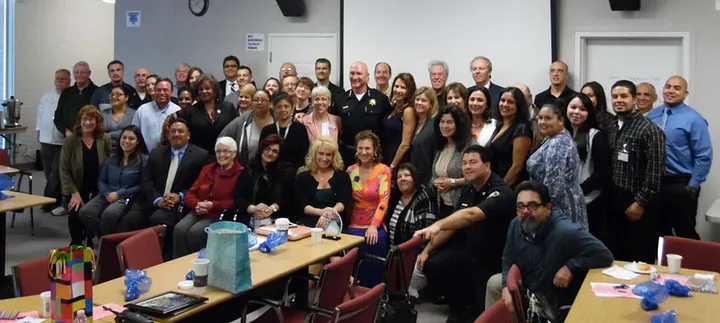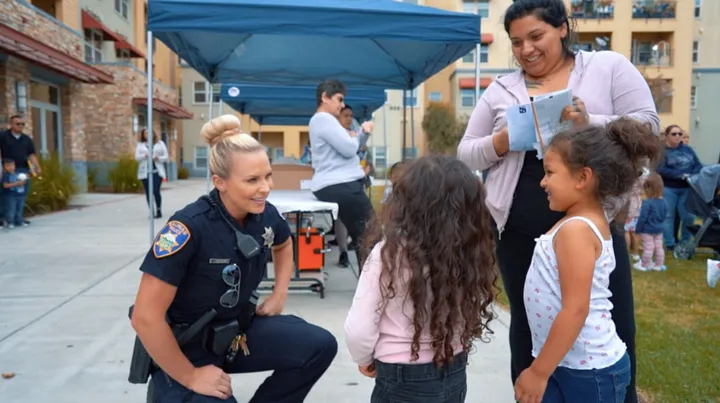Salinas, California, USA
Salinas Data-Driven Youth Violence Prevention Strategy.
Project Type:
Community Engagement, Communications, Cross-Sector, Health and Wellness, Public Safety. Youth Development
At a Glance
Implemented a strategic, data-driven plan that directed increased funding to a street outreach program that decreased the youth assault victim rate from 22% in 2007 to less than 10% in 2019. That success came from implementing a comprehensive approach to violence reduction.
Conducted a three-year data-driven effort that helped provide a clearer picture of how the city’s police department could better match calls for service with staffing and police officer beats.
Used online capacity assessments to help City staff concentrate outreach efforts efficiently and boost the effectiveness of external partnerships.
Making Safe Choices
In 2010, the Obama administration kicked off a pilot program to address violence in some of America’s toughest places. On the shortlist, alongside large urban centers like Chicago, Detroit, and Boston, was the midsize Central California city of Salinas.
The problems Salinas faced were not well known on the national stage, but residents were all too familiar with the gang violence plaguing their city. In just the first three months of the year prior, Salinas had seen a dozen homicides — and victims of violence were largely people under the age of 25. The inclusion of Salinas in the federal pilot highlighted both the severity of the problem and the potential to solve it.
“The others were bigger cities with bigger problems, but our crime rate was just as high,” says Jose Arreola, community safety administrator for the City of Salinas and director of the Community Alliance for Safety and Peace (CASP). Led by the City’s community safety division, CASP launched in 2008 to convene public and private stakeholders around the problem of youth violence. The program caught the eye of Justice Department officials who saw its potential.
As a result of the federal support, CASP was able to implement a strategic, data-driven plan that resulted in the rate of youth assault victims dropping from 22% in 2007 to less than 10% in 2019. That success came from implementing a comprehensive approach to violence reduction that involved increased funding to a street outreach program based on an assessment of gaps in current services provided by the City and nonprofits. The youth victim rate continued to drop in 2020, but increased slightly in 2021. Arreola attributes the increase to disruption of in-person services during the COVID-19 pandemic, which closed schools and paused street outreach efforts.
The successful violence prevention strategy is a major example of how Salinas’ commitment to foundational data-driven practices — especially performance & analytics and evaluations — has translated into meaningful results.
“The data has shown us that we’re moving in the right direction in terms of strategy and tactics.”
‘Relationships Are Key’
What worked in Salinas is two-fold. Externally, CASP deploys a street outreach team that takes time to build trust and relationships with gang-affiliated youth. The aim is to reach individuals who are at risk before they become a victim of violence. Internally, the program convenes agencies and nonprofits and engages with them regularly, so that CASP staff can fast-track youth to the right types of services.
Four years ago, high school administrators identified the need to have on-site mental health services for students. Through CASP, the school district was able to connect with the City’s behavioral health department to place counselors at each school. They are still there today, a testament to the lasting effects of the program’s connections.
“The whole strategy of CASP is that relationships are key,” Arreola says.

His team relies on data to track the program’s progress. They work in partnership with the Monterey County Health Department to process data (from the police department and other agencies) and determine what is statistically significant. Homicide data, for example, is not useful in determining what drives violence, since it tends to be erratic. Heat maps that identify areas where violent assaults happen have been more helpful in guiding where the program directs its efforts, and in showing that it works. Arreola says his team is particularly proud of how the maps show hotspots diminishing over time.
“That represented thousands of youth not victimized by violence and thousands of families not living in fear,” he said.
CASP also uses data in the form of capacity assessments to gauge the engagement levels of existing partners, which helps City staff concentrate outreach efforts efficiently and boost the effectiveness of CASP’s external partners. Assessments have also helped identify new partners. For example, mindful that hospital-based violence intervention programs have proven to be valuable parts of other cities’ comprehensive strategies, the City launched a pilot out of the Natividad Medical Center’s Level II Trauma Center. The program, which offers trauma-informed care to violently injured patients, is now permanent.
Another reason CASP has been so effective is that it bridges a common gap among cities with gang violence: It’s not easy to connect young people who have dropped out of school with services. They often do not get any help until they make contact with the justice system after being arrested.
Having the data to show that CASP works helps sustain the effort. The initiative is now supported by a variety of funders including foundations and government grants.
“Funding for something like this can be a tough sell. Ideologically, a lot of people believe kids involved in this lifestyle are making a negative choice and don’t deserve help. That’s a hard narrative to push back against.”
An Evolving Police Department
The progress Salinas has made in reducing gang and youth violence has coincided with a period of transformation within the City’s police department. One goal was to make the department’s officer corps look more like the people they interact with.
As the city’s population shifted from 47% Hispanic in 2016 to 73% Hispanic in 2021, the police department shifted its hiring practices to prioritize adding Spanish-speaking staff. Over that period, it has hired an additional 26 officers who are Hispanic, for a total of 73. The department also more than doubled the number of female officers over that period.

“We can truly say that we are the community and the community is the police department,” Police Chief Roberto Filice says.
The department also embarked on an efficiency study in 2017, a three-year data-driven effort that helped provide a clearer picture of how it can better match calls for service with staffing and police officer beats. As a result, it may implement a new beat system for the first time in three decades to spread the workload more evenly across staff.
The department also piloted a fourth shift this year that helped align staffing with times of day when calls for service are more frequent. The fourth shift, which overlapped with existing morning and afternoon shifts, helped the department maintain its response time — four minutes and 28 seconds — even as it saw an increase in calls and operated with an overall reduced staff. In the last four years, 15 positions have been cut from the force due to budget reductions: the equivalent of an entire shift.
Chief Filice says he won’t be able to continue the fourth shift or make the beat changes immediately due to the staffing shortage, but he is confident that the numbers demonstrate the value in innovating and realigning the department to fit the community’s evolving needs.
“I am a data-driven person. I love using technology to make us more efficient.”